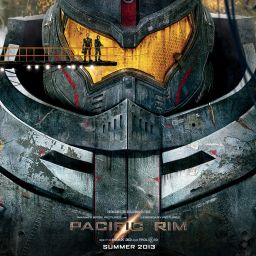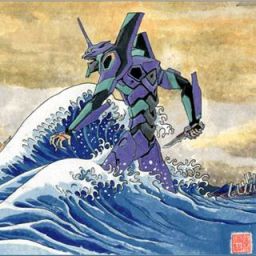
Considering the modern ubiquity of British high culture and American pop culture throughout the world, it is frequently surprising to some that cultural knowledge from other segments of Western culture is as well-known worldwide. It is a truth universally acknowledged that Disney takes items in the public domain, creates new works and then in the process of protecting its trademarks and copyrights — and creating all the products, changes the public perception of the original work.

But The Little Mermaid has also had a cultural influence on non-Western culture, including in Japan and Korea. Below are several examples, ranging from television, to comics (manga), to movies.
Sofia Coppola’s Little Mermaid from Funny Or Die
Junko Mizuno’s Princess Mermaid (2002)
This Japanese manga is definitely not for children. It combines aspects of horror, Japanese style cuteness (kawaii), and erotica into a reinterpretation that follows the tragic nature of the original. As Sarah Fonder puts it in The Toast:
Princess Mermaid is [] gorgeous and unapologetically weird …. This book has everything: mermaids eating dudes, a cyborg jellyfish performing surgery, hawt mermaid-on-human action, hawt mermaid-on-dragon action, princes who harvest mythical creatures, YOUR TEARS.
Unlike the Disney equivalent, it’s not pure, doe-eyed lust that draws our heroine, Julie, to her human lover, Suekichi. They’re the outcasts of their respective families, bound by their fatigue with the war their siblings won’t stop fighting. Julie wants to rescue Suekichi from his abusive family (because for once, the boy is the passive agent, locked away in a dungeon) and take him somewhere safer.
This interpretation isn’t for everyone, and it is definitely … not Disney.
Hayao Miyazaki’s Ponyo (崖の上のポニョ)(2008)

Surplus Princess (AKA The Idle Princess) (잉여공주) (2014)
Oh, Surplus Princess — how ridiculous and delightful you are as a Korean drama! Much like anime shows Magical Project S (1996-97) and Ouran High School Host Club (2006) parody and satirize the clichés in shōjo, Surplus Princess takes on all of the ridiculousness of Korean romantic comedies and workplace dramas.
The Little Mermaid here is spoiled, but not mean-spirited, much like the main character in Prosecutor Princess (do you sense a theme?). She falls in love with a chef that she rescues from drowning — and decides that she must be a human to be with him. While this seems fairly normal for any little mermaid story, usually the mermaid doesn’t choose her love interest based on his apple-shaped butt.
After transforming into a human, she discovers that she has 100 days to find true love or she will turn into sea foam, like the canonic mermaid. However, this situation leads to her to sharing a house with a ragtag group of misfits — and attempting to get a corporate job — where the interview process requires studying and performing in groups.
Unlike many other Korean dramas, this one is quite short because its episode length was cut back to 10 episodes, so it is a rather quick watch. And while the ending doesn’t work for anyone who has decided who is the “true love”, I found it perfect.
Other Recent Korean drama examples that use The Little Mermaid as a plot device: My Girlfriend Is a Gumiho (2010), Secret Garden (2011), Monstar (2013) and Trot Lovers (2014)
The Little Mermaid is a frequently used plot device in Korean dramas, especially in recent years! My Girlfriend Is a Gumiho has the main guy character give his magical girlfriend a copy of The Little Mermaid as an example of what happens when a magical creature tries to become human, but becomes upset when he remembers how the story ends and removes the end of the book. He then tells her the happy Disney version of the story.
In Secret Garden, the Little Mermaid is a plot point throughout much of the show. Before the intended couple starts liking each other, the main guy tells the stuntwoman in his life that she can hang around him — and then like the little mermaid “disappear from his life, like bubbles.” In response, she finds the comparison inaccurate because “the mermaid loved her man.” She later sticks in her own version of the ending of The Little Mermaid into one of his books, which according to Dramabeans’ Javabeans is:
“The Little Mermaid was about to disappear, and at that moment, the prince realized the truth and said to the princess, ‘Is this the best you can do? Are you sure?’ and broke off the engagement. He ran to the Little Mermaid, but she’d noticed the water bubbles and developed an air-bubble washing machine and became a chaebol [, the head of a wealthy corporation]. Meanwhile, the prince went broke with a bad investment and became the Little Mermaid’s Secretary [], and they lived a long, long, really looooong time.”
Reading this shocks him out of his amnesia (this is a Korean drama!) … and they then are happy together.
In Monstar, a heart-broken teen girl retells the story of the Little Mermaid as a creative writing project for school — and surprisingly, the teacher thinks this is an original story! And the reading of this story leads to the reconciliation of best friends — in the way only possible for teen girls who both like the same guy.
In Trot Lovers, one episode focuses around The Little Mermaid, where the retelling of the Andersen version versus the Disney version brings the intended couple together. This drama ends another example of clueless-dude-in-couple-with-amnesia, with a sad change to the story, where as soon as the mermaid turns to bubbles, the prince wholly remembers her.




